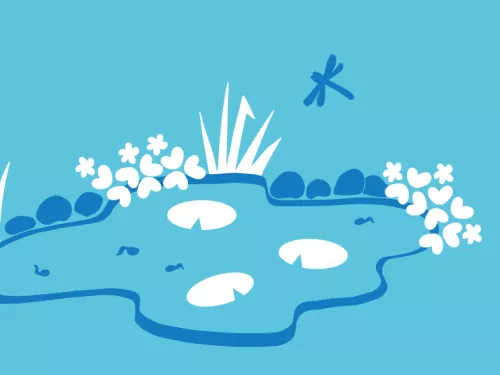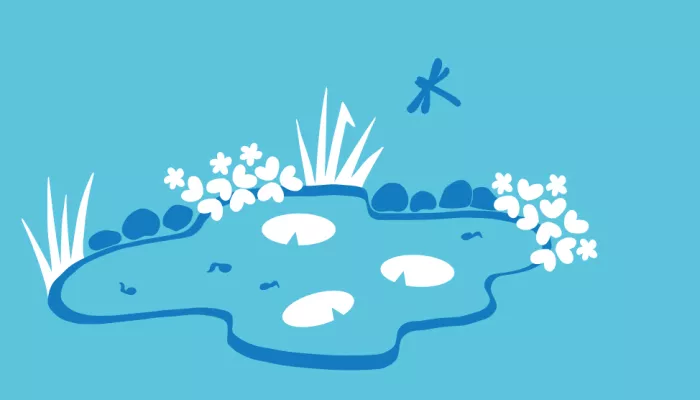
How to create a mini pond
Even a small pond can be home to an interesting range of wildlife, including damsel and dragonflies, frogs and newts.

Learn about companion planting, friendly pest control, organic repellents and how wildlife and growing vegetables can go hand in hand.
It is thought that some amphibians, such as frogs, are now more common in garden ponds than in the countryside. You can build a pond at any time during the year, but if you start in autumn or late winter, it will get established much quicker.
Step 1
It is better for wildlife if you put the pond in a warm, sunny area – tadpoles, dragonflies and plants with thrive in these conditions. First, mark out your pond on the ground with a rope or hosepipe, and then get digging! Ensure that the sides are level as you dig by placing a plank across the pond’s hole with a spirit level on top. Remember to include some shallow areas - a sloping 'beach' is ideal, to allow wildlife easy access in and out of the pond.
Step 2
Remove any sharp stones from the bottom of the hole. Put down a 5 cm-thick layer of sand to line the hole. Sand is preferable because it is sterile and will not harbour any undesirable seeds or microbes, but you can also try old carpet, newspapers or even loft insulation material. Remember to save some sand for step 4.
Step 3
Dig a trench around the edge of the pond for the overhanging pond liner to drop into. Place the liner carefully in the hole and tuck the edge into the trench; weigh it down with large rocks. Any extra excess liner can be snipped off with scissors.
Step 4
Fill the bottom of the pond with the remaining sand.
Step 5
Fill the pond up, this may take longer than you think. If possible, use collected rainwater to fill your pond, or fill from the tap with a hose. To stop the sand substrate dispersing, rest the nozzle of the hose on a plastic bag to absorb some of the energy. If you do fill your pond with tap water then leave it so stand for a few days before adding it in.
As the pond fills up, the liner will stretch. Back fill the trench around the edge of the pond with soil. As the pond is filling, place turf, soil or flagstones over the exposed liner at the pond edges. Butyl liner degrades in sunlight, so try not to leave areas of uncovered liner exposed for too long.
Step 6
Plants can be introduced to your pond approximately 1-2 weeks after the initial filling with water. Carefully selected native species (see below) will support your local wildlife.
Step 7
Watch and see what wildlife visits. Place stones, logs and plants around the edges to create habitats for pond-visiting creatures. Consider adding a plank of wood or a similar ramp to help any wildlife that might fall in. By including a gently sloping beach area when digging your pond, you can ensure wildlife have an easy way out.
If plants are well chosen, and the pond is kept in a relatively balanced ecological state, it shouldn’t need much maintenance at all. However, do keep an eye out for a build-up of dead organic matter and encroaching vegetation.


Even a small pond can be home to an interesting range of wildlife, including damsel and dragonflies, frogs and newts.

There are plenty of ways you can take action against climate change in your own backyard or local greenspace.
